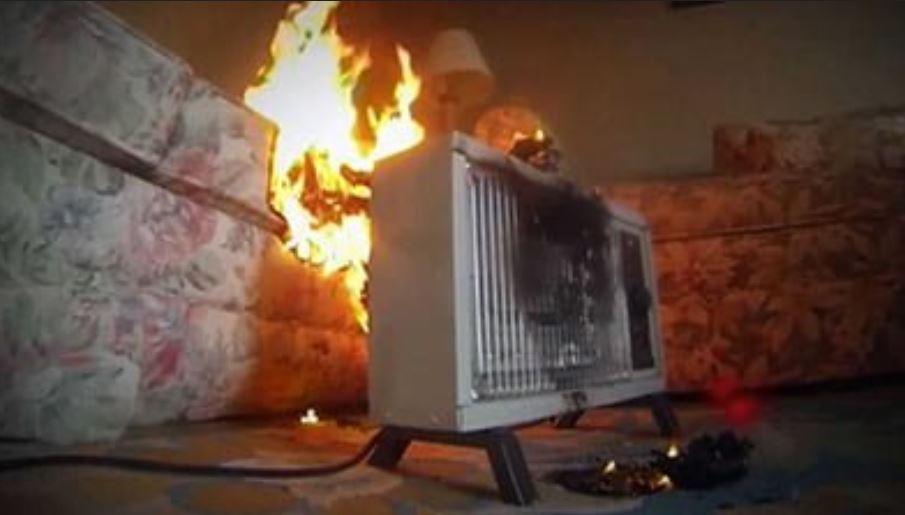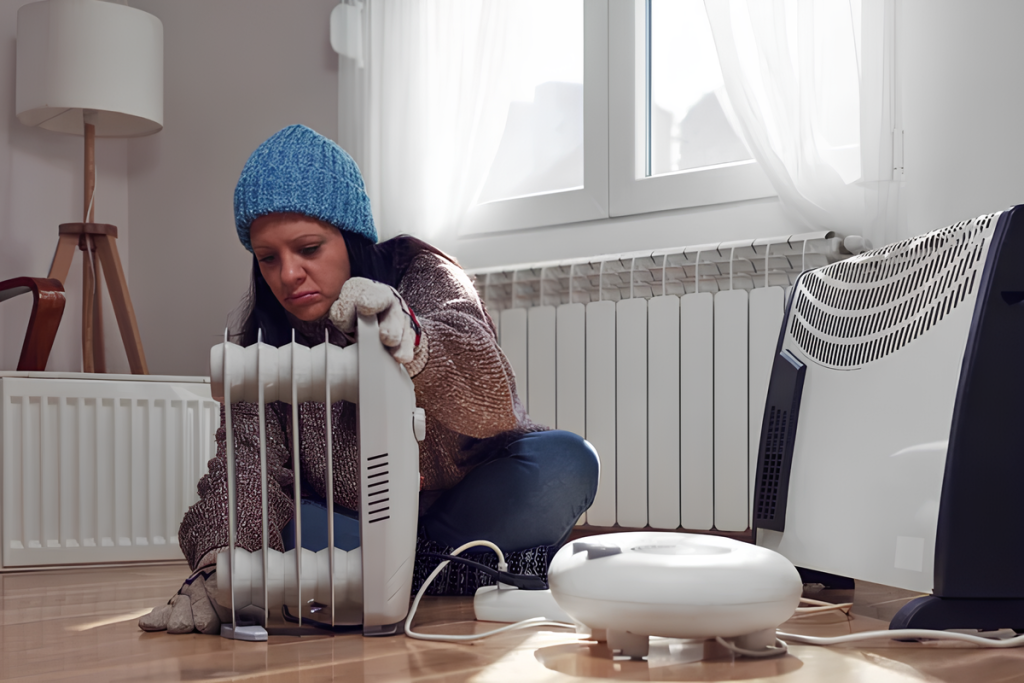Are you preparing for the approaching winter days? With multiple room heating options, it can be overwhelming to pick anyone, especially in light of their effectiveness and safety.
Oil heaters are known for their slow heating mechanisms and efficient power usage. However, the question of their safety still lingers in several users’ minds. Traditional designs of oil room heaters are what we will evaluate in this article.
Therefore, if you are questioning the safety of oil-filled room heaters, you have landed on the right page. Let’s begin exploring!
All About Oil-Filled Heaters

Investing in an oil heater can be a tricky job. One must be cautious about multiple features like safe design, mechanism, and maintenance. But before leaping into the details of oil room heaters, let’s start with understanding the basics.
What Are Oil-Filled Heaters?
Oil-filled, or column heaters, are portable room heating devices. The mechanism of these heaters functions differently in comparison to traditional or infrared heaters. It consists of oil-filled, enclosed tubes that use electricity as their power to heat up and radiate warmth.
Unlike kerosene or electric heaters, oil-filled room heating devices do not combust fuel. It thus increases both cost and power efficiency for prolonged use. They also lower the risk of emitting hazardous gas, thus flexing its first safety approach.
Not sure which heater is right for you? Discover key insights in our oil vs. electric heater guide.
Where Can We Place the Oil-Filled Heaters in a Room?
Finding an appropriate place for your room heater is crucial, as it ensures balanced heat flow across the space. Considering a portable average size of one meter, we recommend placing the heater in a sturdy center space. The first safety measure for using room heaters is to avoid unnecessary turbulence.
Next, while trying to warm up a comparatively bigger space, it is always wise to close the doors and windows to trap heat radiation. One might also opt for two or more oil-filled heaters to attain a significant level of warmth.
Lastly, pick an indoor spot away from curtains, tablecloths, bedding, and wooden furniture. Even though oil-filled heaters do not flame up to combustible flue, a chance of burning never leaves the scenario. Therefore, extra caution is necessary.
Safety and Efficiency of Oil-Filled Heaters

Now that we have a clear understanding of the basics, it is time for in-depth knowledge. Here are the top five safety and efficiency features that an oil-filled radiator offers.
1. Safe Design
A safe and intelligent heater body is the first protective step that oil-filled heaters take. No coil or highly heated body part is exposed to minimize accidental burns by touch. Few models have an extra layer of cover to ensure maximum safety.
2. Smooth Mechanism
These heaters work on an oil heating technique, ensuring smooth performance. There is no hassle with fuel combustion. Once we switch on the power, the oil heats within the closed tubes and circulates constantly to radiate heat waves and maintain a warm environment for a long time.
3. High-Temperature Toleration
The boiling temperature of the oil content is relatively high in the heaters. Therefore, it helps maintain a high temperature for a prolonged time without the risk of overheating mishaps.
Built-in Timer
Several oil-filled room heaters have a built-in timer feature. It helps users have an upper hand on energy efficiency by presetting on and off functions. Besides, one also avoids any risk of leaving the heater unattended for a long time.
4. Oil Temperature Monitoring
The thermostat of an oil-filled heater keeps track of the rising temperature. It thus signals the need to switch off the heater manually to avoid any risk due to overheating. Meanwhile, the boiling oil content ensures balanced heat radiation until the temperature drops to normal.
Dangers of Oil-Filled Heaters

The answer to the safety concerns of oil-filled hearts is not limited to the built-in features and design. The dangers that accompany it might be a turnoff. Below are a few risks that one needs to note before use.
1. Fire From Oil Heaters
Oil-filled heaters do not produce flames or have exposed heated surfaces. However, if flammable gas and objects come close to the heating rod, it might ignite a fire. Also, we never recommend using a heater with a broken safety cover to avoid accidents.
2. Placement Mishap
Finding a sturdy base for oil-filled heaters is crucial. Placing it on an uneven spot might topple the heater on a flammable surface, causing the risk of an uncontrollable fire. We advise positioning the heater in a center spot away from curtains, carpet, or bedding.
3. Oil Leakage
Oil-filled heaters have encapsulated tubes that enable smooth circulation of the heated oil. However, using an old model or a broken and leaky heater will be a proven risk of causing a fire.
4. Gas Leakage
These specific room heaters do not emit any hazardous gases from oil combustion. However, a damaged oil-filled radiator might release carbon monoxide as the oil reaches its boiling temperature. Inhaling monoxide is risky for our health.
5. Fuse Failure
Like most other types, oil-filled radiators also have a fuse to prevent excessive heating or explosion. However, a broken fuse will not trip even with overheating oil and might cause an explosion or accidental fire.
Conclusion
Oil-filled heaters are safe for domestic use with responsible usage. Thus, the design and built-in features of these heaters undoubtedly cover maximum safety and efficiency. However, mishandling, improper maintenance, and negligence can cause accidents.
Therefore, if you are weighing the safety and efficiency of oil-filled heaters, we give you a green flag to proceed. Lastly, do not forget to employ extra caution to avoid accidents.
Did you find the blog helpful and find the answer to a worrying question? Comment below and share your thoughts.
Be sure to check out these other posts for more fascinating insights:

